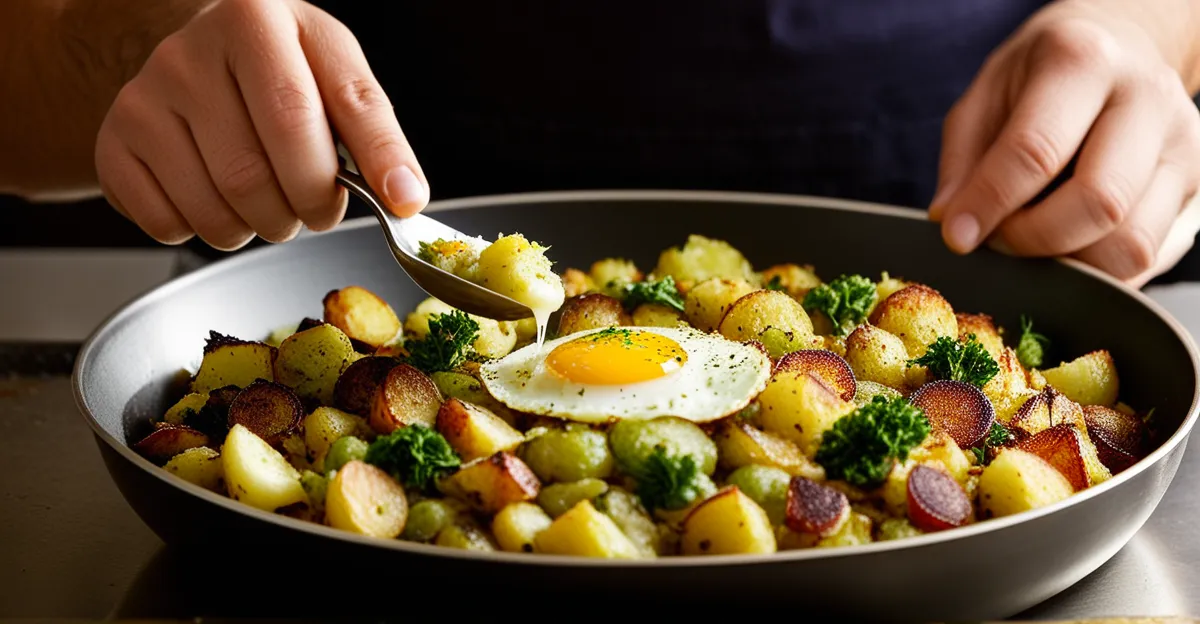Essential Ingredients for Bubble and Squeak
When preparing traditional bubble and squeak, the foundation lies in the right bubble and squeak ingredients. The essential vegetables are potatoes and cabbage—potatoes provide the comforting, creamy base, while cabbage contributes a subtle sweetness and texture contrast. These two ingredients form the cornerstone of this classic British dish.
Beyond these staples, leftover vegetables can easily be incorporated to add depth and variety. Common additions include carrots, Brussels sprouts, peas, or even leeks. These extras not only enhance flavour but also help reduce food waste by using whatever vegetables you have on hand.
In the same genre : What Unique Flavors Define the Essence of Traditional British Cuisine?
In terms of quantity, aim for a balanced mix where potatoes slightly outweigh the greens to achieve the right consistency and taste. Typically, a ratio of two parts potatoes to one part cabbage works well.
Seasoning is crucial. Simple salt and pepper often suffice, but a touch of mustard or a sprinkle of nutmeg can elevate the dish. Adding herbs like thyme or parsley provides fresh aromatic notes, ensuring that your bubble and squeak is both traditional and flavour-packed.
Additional reading : Exploring Traditional UK Recipes: Are These Dishes Still Relevant Today?
Step-by-Step Method for Perfect Bubble and Squeak
Mastering the bubble and squeak recipe starts with properly preparing your bubble and squeak ingredients. Begin by finely chopping leftover vegetables, ensuring they are uniform in size for even cooking. Mix potatoes and cabbage thoroughly with any additional vegetables, like carrots or Brussels sprouts, to maintain consistency.
When it comes to how to make bubble and squeak crispy and golden, the pan-frying technique is essential. Use a heavy-based frying pan and heat it on medium to medium-high. Add a small amount of oil or butter to prevent sticking without making the mixture greasy.
Cook the mixture in batches, pressing it down gently into a thick patty. Fry each side for about 5–7 minutes until golden brown and crispy. Avoid overcrowding the pan to maintain heat and even browning. Timing and temperature are crucial; too low, and the bubble and squeak will stew rather than crisp. Too high, and it may burn before cooking through.
Following these cooking instructions guarantees a tasty, traditional dish with perfectly crisp edges and a comforting texture inside.
Variation Ideas for Enhanced Flavour
Adding variety to your bubble and squeak elevates the dish beyond its traditional roots. Incorporating add-ins for bubble and squeak such as leeks, peas, or diced carrots introduces fresh colours and textures that enrich every bite. These vegetables blend seamlessly with the classic potatoes and cabbage, creating a flavourful bubble and squeak.
For a heartier meal, consider protein additions like cooked bacon, sausage, or even shredded chicken. These boost the dish’s richness and appeal, making it more filling without overpowering the original flavours.
Vegan and vegetarian adaptations are straightforward. Swap traditional butter for plant-based oils, and add nutritional yeast or smoked paprika for depth without animal products. Herbs like thyme, rosemary, or parsley also enhance the aroma and taste, making the dish versatile for different palates.
Experimenting with these bubble and squeak variations lets you customize the meal to your preferences while maintaining the comforting essence of this classic British dish.
Common Questions Answered
When wondering about the best vegetables for bubble and squeak, potatoes and cabbage remain unmatched due to their complementary textures and flavours. However, practical substitutions like carrots, Brussels sprouts, or peas work well if you lack traditional ingredients. Using leftover vegetables ensures minimal waste and adds variety, keeping the dish fresh and interesting.
A frequent query involves storage and reheating. For optimal results, store cooked bubble and squeak in an airtight container in the refrigerator for up to three days. Reheat gently in a frying pan to restore crispiness, avoiding microwaving, which can make it soggy.
Troubleshooting bubble and squeak issues often centers on sogginess or uneven cooking. To fix sogginess, ensure excess moisture from vegetables is squeezed out before cooking. Also, avoid overcrowding the pan, which reduces heat and prevents crisp edges.
Ultimately, mastering solutions from this bubble and squeak FAQ improves both taste and texture, encouraging confident preparation every time.




